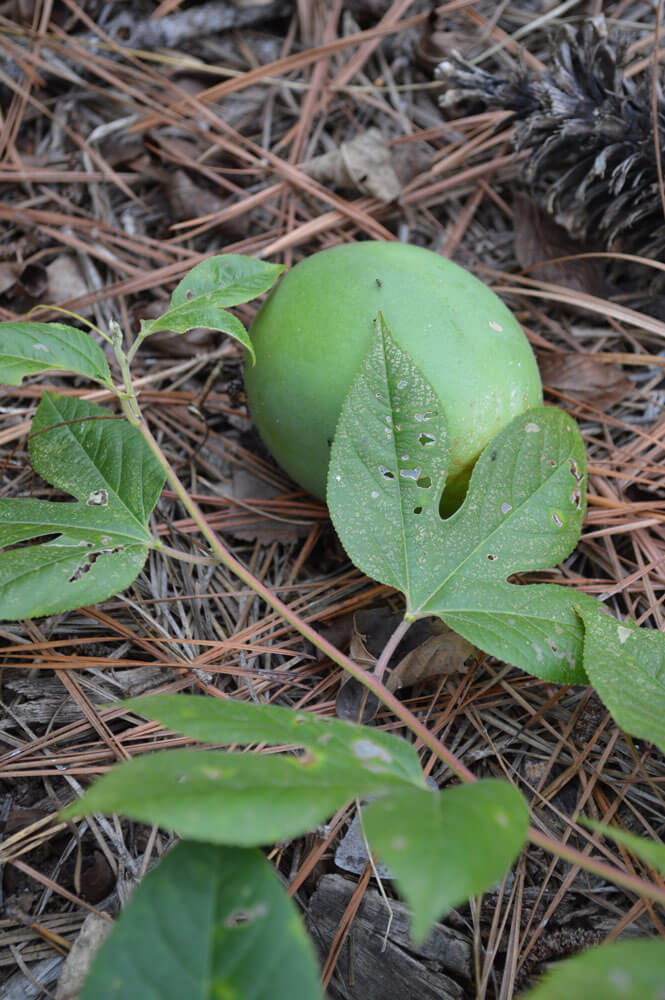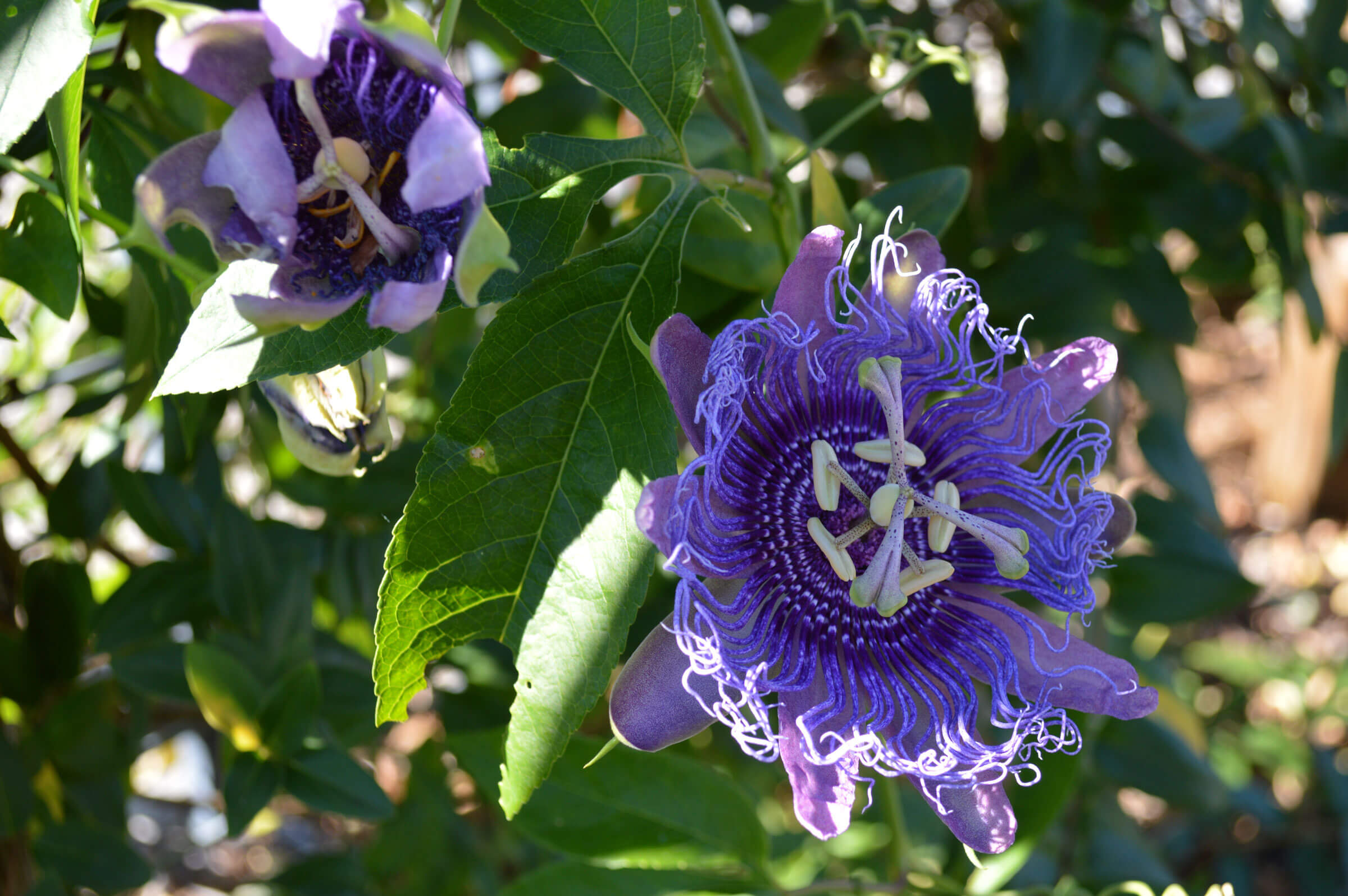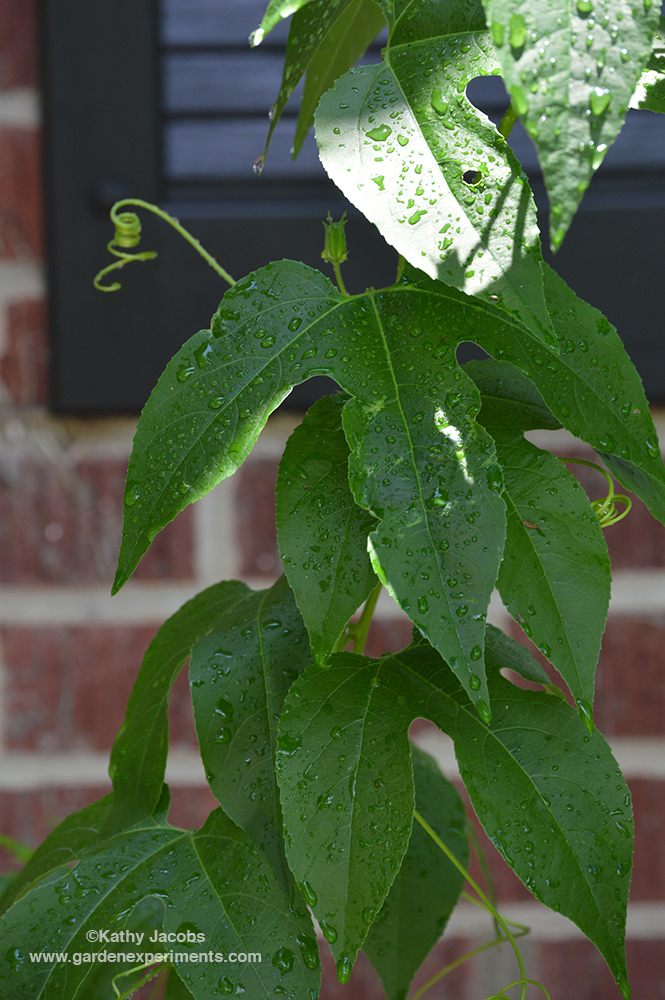Purple passionflower (Passiflora incarnata), also known as maypop, is a relatively quick-growing, perennial, herbaceous vine in the Passifloraceae family. You can find this native vine growing throughout the Southeast from Texas to Kansas, up to Pennsylvania, and down to Florida. In the southeastern U.S., I’ve often seen it growing naturally in pastures or open fields. It has popped up in my backyard, where I assume a bird dropped some seeds (through its droppings).
It’s a great addition to an arbor or trellis, providing necessary food for the caterpillars of several butterfly species. The flower is very unique and attractive, and blooms from April through September. Purple passionflower vine has tri-lobed leaves. This plant produces lots of tendrils to cling to structures as it climbs and grows.
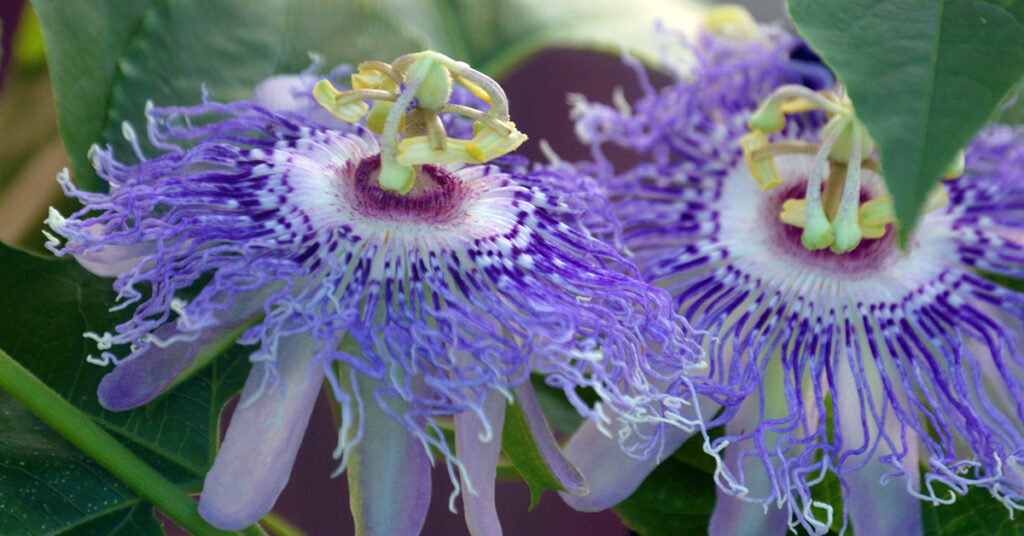
How to Grow Purple Passionflower
Plant these vines in full sun and provide them with something to climb on (though they will readily spread across the ground, creating a carpet). They don’t require much water and are both heat-tolerant and cold-tolerant. This is an easy vine to grow, requiring little maintenance. The vine will die back in winter, and new shoots will form in the spring — sometimes in places you don’t want them to be. Purple passionflower can be grown in USDA Hardiness Zones 5 to 9.
The native range of purple passionflower vine includes the Southeast and as far north as Pennsylvania and all states west to Kansas.
How to Propagate Passionflower Vine
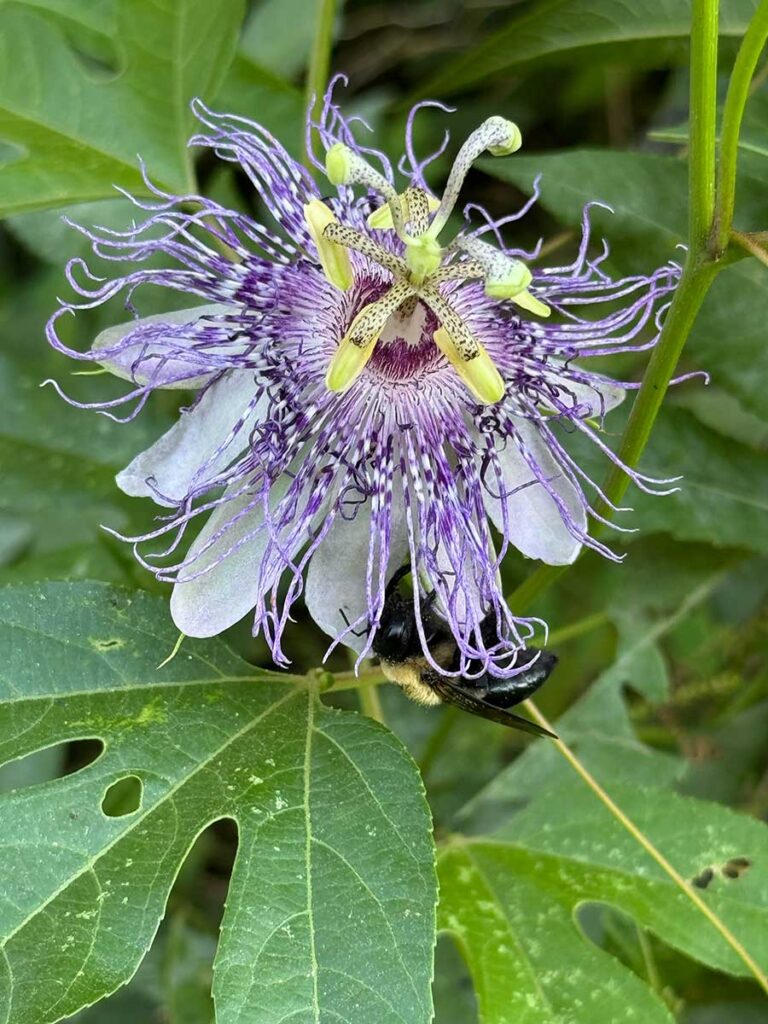
You can propagate this plant by cuttings or by seeds. In the early spring, take a 6 to 8-inch cutting of the plant. Remove the leaves from the bottom 4 or 5 inches. Dip the cutting bottom in the rooting medium and plant it directly in moistened potting soil. Keep the soil relatively moist until roots develop — but not wet or you’ll see fungus growing on the soil.
If you want to plant the seeds, you should remove them from the fruit when the fruit starts to shrivel up and then plant them in the soil.
If the vine develops suckers, you can detach these with their roots and plant them as well. This is the easiest method to grow new passionflower vines. In my garden, I have many vines that come up in unwanted places, so I just pull them out and put them in a pot. They grow new roots, and I give them away. It’s a very simple way to create new plants!
Wildlife Uses for Purple Passionflower
Passionflower is an important food source for the larvae of several butterfly species, including the Gulf fritillary, zebra longwing, red-banded hairstreak, and Julia butterfly. These larvae may strip a vine bare. The flowers attract butterflies and bees that feed on nectar. Including purple passionflower in your garden is a great way to attract gulf fritillary butterflies! Additionally, some birds will eat the fruit, and turkeys will eat the tendrils of the plant. This plant is moderately resistant to deer.
I grow purple passionflower in my garden just to play host to the larvae of the Gulf fritillary butterfly. As a result, I rarely see the vine in bloom (the caterpillars eat them before they get to flower), but I get to watch butterflies as they emerge from their chrysalis. In my book, that’s a fair trade-off. On my trellis, I have paired this vine with a clematis vine to ensure that I still see some flowers in that spot, yet still provide the butterflies with their food source.
I haven’t seen hummingbirds feed from this vine – but if you’re looking for a great native vine that attracts these tiny birds, check out the cross vine.
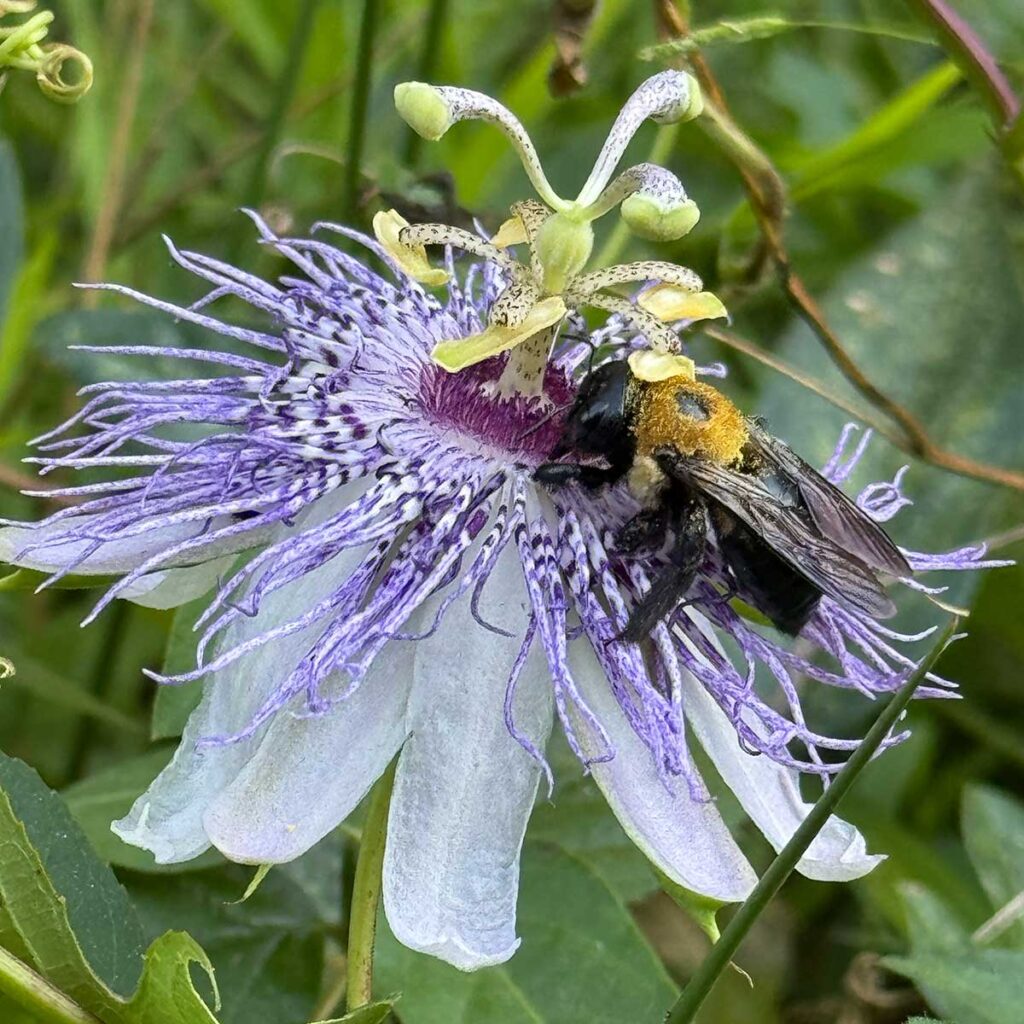
Pollination
See how the anthers of the flower face downwards? This is for bees and other insects that gather nectar from the blooms. The anthers rub on the back of the insect, which then carries the pollen to another flower for pollination.
The stigma face a little out and down so that insects that land on the flower at first, immediately contact the stigmas, leaving pollen on them.
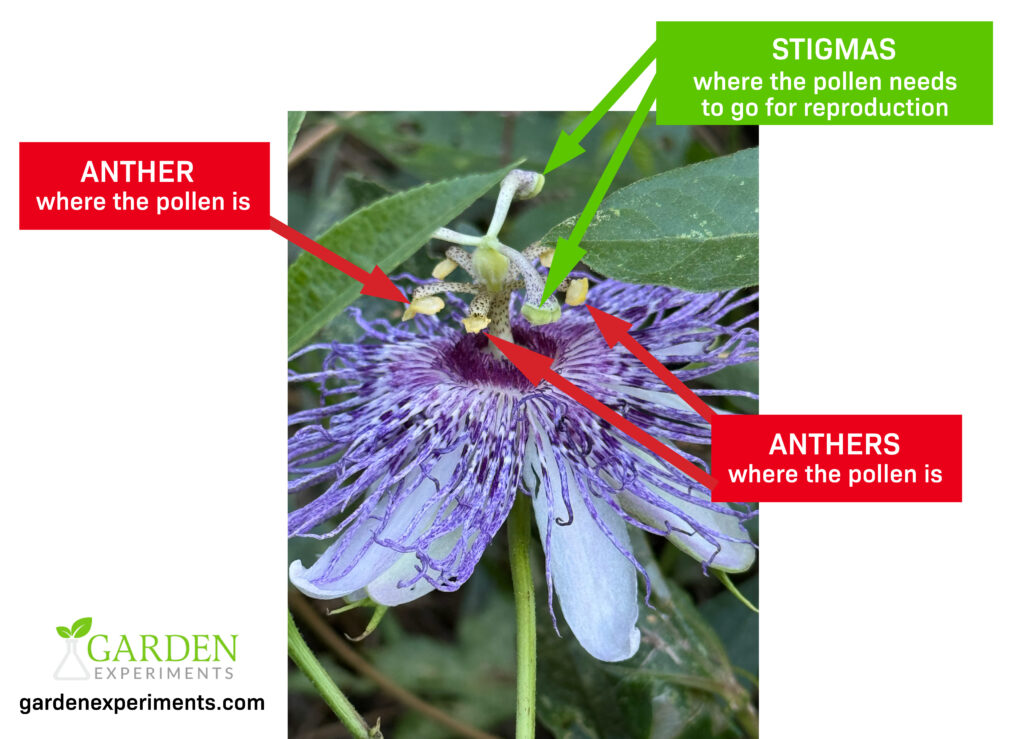
Resources
Check out the USDA plant profile for Passiflora incarnata
